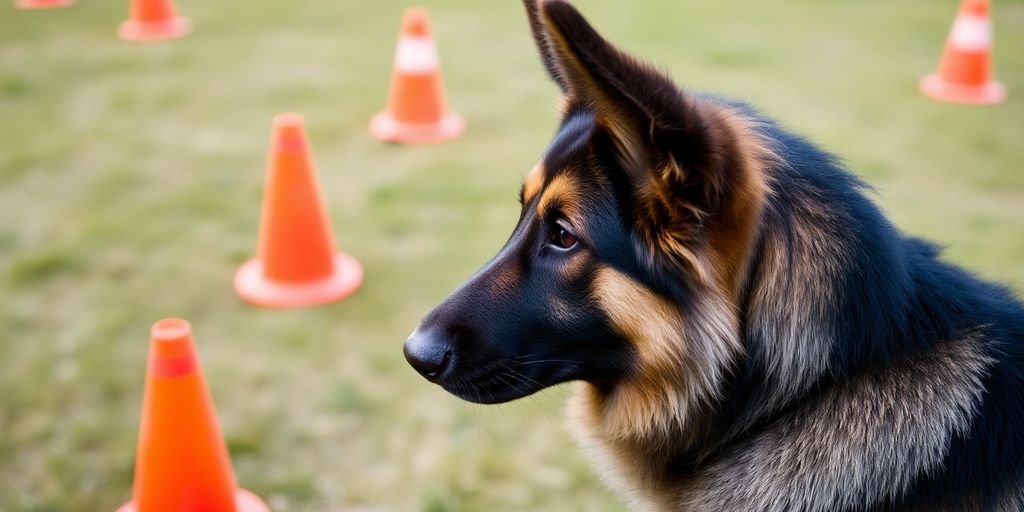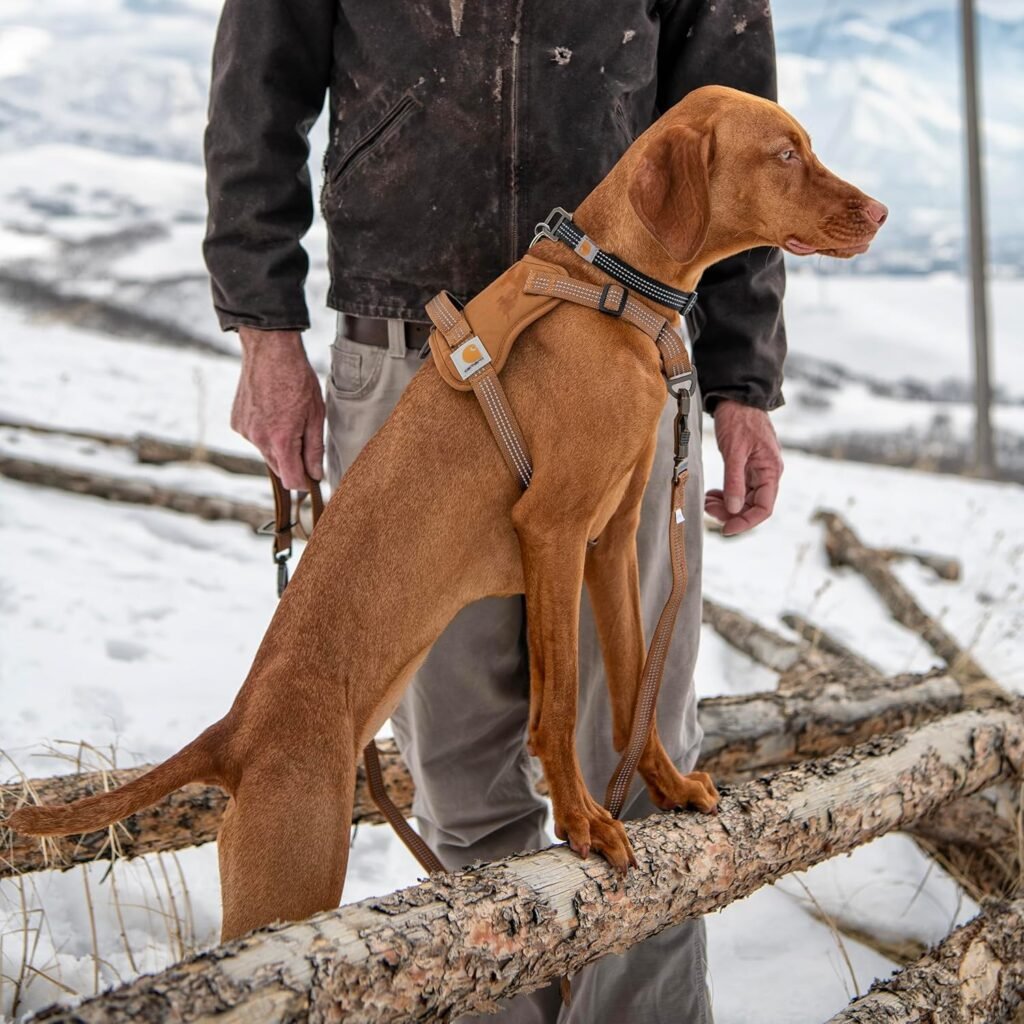
Training a German Shepherd can be a rewarding experience, but it definitely has its challenges. These dogs are known for their intelligence and loyalty, but they also need guidance to channel their energy positively. If you’re a German Shepherd owner, understanding their behavior and using the right training techniques is crucial. This guide will walk you through the essential training methods every German Shepherd owner should know.
Key Takeaways
- Understand your German Shepherd’s body language and vocal cues to improve communication.
- Use positive reinforcement, like treats and toys, to encourage good behavior.
- Start training early, focusing on basic commands like sit, stay, and come.
- Socialize your German Shepherd to different environments and experiences to build confidence.
- Consistency and patience are key; stick to a routine and be patient with progress.
Understanding Your German Shepherd’s Behavior
Reading Body Language and Facial Expressions
German Shepherds are expressive creatures, and learning to read their body language can be like unlocking a new way to communicate with them. Pay attention to their ears, tail, and posture. For instance, ears perked up usually mean they’re alert or interested, while a lowered tail might indicate they’re feeling submissive or unsure. Understanding these signals can help you respond appropriately to their needs.
Recognizing Vocal Cues
German Shepherds have a wide range of vocal expressions. From barking and whining to growling or howling, each sound conveys a different message. A bark might mean they’re excited or alerting you to something, while a whine could indicate they want attention or are feeling anxious. Recognizing these cues can help you address their needs more effectively.
Identifying Behavioral Triggers
Identifying what triggers certain behaviors in your German Shepherd is crucial for managing them effectively. Common triggers include strangers, loud noises, or even changes in their routine. By observing their reactions to different situations, you can start to understand what makes them tick and work on strategies to manage or mitigate these triggers.
Observing and understanding your German Shepherd’s behavior isn’t just about managing them better—it’s about building a stronger bond with your furry friend. By learning their unique ways of communication, you can ensure a harmonious and nurturing environment for both of you.
Positive Reinforcement Techniques
Using Treats and Toys Effectively
When it comes to training your German Shepherd, using treats and toys is like having a secret weapon. These rewards can make a huge difference in how quickly your dog learns new commands. Start by identifying what your dog loves the most—some dogs go crazy for a particular treat, while others might prefer a squeaky toy. Consistency is key here; always reward your dog immediately after they perform the desired behavior. This helps them associate the action with the reward.
- Choose high-value treats that are small and easy to digest.
- Use toys that your dog doesn’t have access to all the time to keep them special.
- Mix up the rewards to keep your dog engaged and excited.
Timing Your Rewards
Timing is everything when it comes to training. If you wait too long to give your dog a treat or praise, they might not connect it with the behavior you’re trying to reinforce. A clicker can be a great tool to help with this. It makes a distinct sound that tells your dog exactly when they’ve done something right. Pair the click with a treat, and you’ll have a powerful training combo.
- Reward immediately after the desired behavior.
- Use a clicker for precise timing.
- Practice makes perfect—keep working on your timing to get it just right.
Avoiding Punishment-Based Methods
Using punishment in training can be tempting, especially when your dog is being stubborn. But it’s not the best approach. Punishment can lead to fear and anxiety, which isn’t what you want for your furry friend. Instead, focus on positive reinforcement. This means rewarding good behavior and ignoring or redirecting unwanted behavior. Your dog will be happier and more willing to learn.
Remember, training should be a fun and rewarding experience for both you and your dog. Keep it positive, and you’ll both enjoy the process more.
Basic Obedience Training Commands
Teaching Sit, Stay, and Come
Training your German Shepherd in basic commands like “sit,” “stay,” and “come” is foundational. These commands not only make daily life smoother but also ensure your dog’s safety in various situations. To teach “sit,” hold a treat close to your dog’s nose, then move your hand up, allowing their head to follow the treat and causing their bottom to lower. Once they’re in a sitting position, say “sit,” give them the treat, and share affection.
For “stay,” start by asking your dog to sit. Then, open your palm in front of you and say “stay.” Take a few steps back. If they stay, reward them with a treat and affection. Gradually increase the distance and time you ask them to stay.
Teaching “come” is crucial for safety. Put a leash on your dog and go to a quiet area. Gently pull the leash and say “come,” then reward them when they reach you. Practice this command in different settings to ensure they respond in any environment.
Incorporating Hand Signals
Hand signals can be a great addition to verbal commands, especially for German Shepherds, who are known for their intelligence and ability to learn visual cues. To incorporate hand signals, use a distinct gesture for each command. For “sit,” you might raise your hand with your palm open. For “stay,” extend your arm with your palm facing forward. Consistency is key, so ensure everyone in the household uses the same signals.
Practicing in Different Environments
It’s important to practice commands in various environments to ensure your dog responds in any situation. Start training in a quiet room with minimal distractions. Once your dog masters a command there, move to a busier room, and eventually, try practicing outside.
| Environment | Distractions Level | Command Focus |
|---|---|---|
| Quiet room | Low | Basic commands |
| Living room | Medium | Commands with noise |
| Backyard | High | Commands with other dogs or people |
By practicing in different environments, your German Shepherd will learn to obey commands no matter where they are or what’s going on around them. This adaptability is essential for their safety and your peace of mind.
Training your German Shepherd with consistency and patience will strengthen your bond, making them a well-behaved and happy companion. Remember, every dog learns at their own pace, so celebrate small victories along the way.
Socialization and Early Training
Introducing Your Puppy to New Experiences
The journey of socializing your German Shepherd should kick off the moment they step paw into your home. The first 16 weeks are crucial for their social development, as they are more open to new experiences and less fearful. During this time, expose them to a variety of people, animals, and environments. This exposure helps them grow into well-rounded adults.
- Start with quiet environments and gradually increase the level of activity.
- Introduce them to different sounds, smells, and sights, like vacuum cleaners or bicycles.
- Reward them with treats and praise to create positive associations.
Managing Interactions with Other Dogs
Introducing your German Shepherd to other dogs should be done thoughtfully. Begin with calm, well-mannered dogs, ideally in a controlled setting.
- Use leashes initially to maintain control.
- Watch for signs of aggression or fear and separate if necessary.
- Allow them to sniff and interact at their own pace.
Building Confidence in Various Settings
Confidence-building is a big part of early training. German Shepherds can be naturally cautious, so it’s important to encourage them to explore.
- Create a socialization schedule that includes diverse experiences.
- Enroll them in puppy classes to meet other dogs and people in a safe environment.
- Practice grooming activities such as touching their paws and ears to get them comfortable with handling.

Early socialization and training lay the foundation for a happy, balanced German Shepherd. Taking the time to introduce them to the world in a positive way will pay off in the long run.
For more insights on socializing your German Shepherd, consider checking out expose them to diverse people, animals, and environments. This will help you understand the importance of early socialization and basic obedience commands like “sit” and “stay”.
Advanced Training for German Shepherds
Agility and Obstacle Courses
German Shepherds aren’t just about looks; they’re built for action. Their natural physique makes them perfect for agility and obstacle courses. These activities not only keep them physically fit but also mentally sharp. Agility training can be a fun way to strengthen your bond with your dog. You’ll guide them through tunnels, over jumps, and around poles. It’s a team effort that requires communication and trust. To start, set up a simple course in your backyard. Gradually increase the complexity as your Shepherd becomes more confident. Remember, patience is key—every dog learns at their own pace.
Service and Therapy Dog Training
German Shepherds are often seen in service and therapy roles due to their intelligence and eagerness to please. Training them for these roles involves teaching specific tasks like retrieving items, opening doors, or providing emotional support. Patience and consistency are crucial here. It’s essential to introduce them to various environments and situations they’ll face in their work. Start with basic obedience and gradually introduce more complex tasks. This type of training requires dedication but can be incredibly rewarding, both for the dog and the handler.
Search and Rescue Skills
With their keen sense of smell and strong work ethic, German Shepherds excel in search and rescue missions. Training for this involves scent tracking, which can be started with simple games at home. Hide an object with your scent and encourage your dog to find it. As they improve, increase the distance and complexity of the search. Training should also include exposure to different terrains and weather conditions. Search and rescue work is demanding, but it highlights the incredible capabilities of this breed. It’s a testament to their loyalty and determination.
Troubleshooting Common Behavioral Issues

Addressing Separation Anxiety
Separation anxiety is a common issue among German Shepherds. These dogs are known for their loyalty and attachment to their owners, which can make being apart quite stressful for them. Recognizing the signs early—such as destructive behavior, excessive barking, or attempts to escape—can help you manage this issue effectively.
- Gradual Desensitization: Start by leaving your dog alone for short periods and gradually increase the time. This helps them get used to your absence.
- Create a Safe Space: Make sure your German Shepherd has a comfortable area where they feel secure. A favorite blanket or toy can be reassuring.
- Stay Calm During Departures and Arrivals: Avoid making a fuss when leaving or returning home. This helps your dog understand that your absence is a normal part of the day.
Remember, the goal is to make your dog feel secure even when you’re not around. Patience and consistency are key.
Managing Destructive Behavior
Destructive behavior can be frustrating, but it’s often a sign that your German Shepherd is bored or anxious. Dogs need mental and physical stimulation to keep them occupied and happy.
- Provide Plenty of Exercise: A tired dog is a happy dog. Ensure your German Shepherd gets enough physical activity each day.
- Interactive Toys and Puzzles: These can keep your dog engaged and mentally stimulated, reducing the urge to destroy household items.
- Training Sessions: Regular training not only reinforces good behavior but also provides mental challenges that can tire your dog out.
Correcting Excessive Barking
Excessive barking can be a nuisance, but it’s important to understand why your German Shepherd is barking. Is it boredom, fear, or a need to alert you to something?
- Identify the Cause: Pay attention to what triggers your dog’s barking. Is it a specific noise, person, or situation?
- Teach the ‘Quiet’ Command: Reward your dog for stopping barking on command. Consistency is crucial for this to be effective.
- Provide Distractions: If your dog barks out of boredom, try giving them a toy or engaging them in a game to divert their attention.
Excessive barking is often a sign of unmet needs. Address the root cause, and you’ll find the barking diminishes over time.
Consistency and Patience in Training
Training your German Shepherd isn’t just about teaching commands; it’s about building a strong relationship based on trust and understanding. Consistency and patience are your best friends in this journey. Let’s dive into how to make these elements work for you and your pup.
Establishing a Routine
Creating a routine is like setting a schedule for a child. Dogs thrive on predictability, and a consistent routine helps them understand what’s expected. Start by setting regular times for training sessions, meals, and walks. Over time, your German Shepherd will learn to anticipate these activities, making training more effective.
- Set specific times for training sessions.
- Keep feeding times consistent.
- Schedule regular walks and playtime.
Maintaining Consistent Commands
Imagine trying to learn a language where words change meaning every day. Confusing, right? The same applies to your dog. Stick to the same commands for each action and avoid mixing them up. If you use “sit” for sitting, ensure everyone in the household uses the same word. Consistency in language helps your dog learn faster and reduces confusion.
- Use the same word for each command.
- Ensure all family members use consistent commands.
- Avoid changing commands mid-training.
Dealing with Training Setbacks
Training setbacks are normal, and they don’t mean failure. Sometimes, your dog might regress or seem to forget what they’ve learned. This is where patience comes in. Instead of getting frustrated, revisit the basics and reinforce positive behavior. Remember, your dog is learning and growing, just like you.
Training isn’t a race; it’s a marathon. Stay calm, be patient, and celebrate small victories. Your persistence will pay off in the long run.
Incorporating these tips into your training routine can greatly enhance the bond between you and your German Shepherd, making the process enjoyable and rewarding for both of you.
The Role of Professional Trainers

Choosing the Right Trainer
When it comes to picking a trainer for your German Shepherd, it’s not just about credentials. Look for someone who has hands-on experience with this specific breed. German Shepherds have unique behaviors and needs, so a trainer familiar with them can make a big difference. Avoid trainers who use outdated methods like punishment or dominance tactics. Instead, find someone who focuses on positive reinforcement. It’s also a good idea to watch a session first, to see how they interact with the dogs and the owners.
Understanding Training Certifications
Training certifications can be a bit confusing. Not every certification guarantees quality, but it can be a starting point. Certifications like CPDT (Certified Professional Dog Trainer) or KPA (Karen Pryor Academy) show that the trainer has undergone some formal education. However, don’t rely solely on these. Ask questions about their experience, especially with German Shepherds. A good trainer will be open to discussing their methods and past successes.
When to Seek Professional Help
Sometimes, despite your best efforts, things don’t go as planned. If your German Shepherd is showing signs of stress, anxiety, or aggression that you can’t manage, it might be time to call in a professional. A trainer can help develop personalized training plans that work with your dog’s unique personality and needs. They can also offer guidance on how to address specific issues, ensuring a happier and healthier relationship with your pet.
Training a German Shepherd isn’t always straightforward, and it’s okay to ask for help. Professional trainers can provide the support and expertise you need to succeed.
Wrapping It Up
So, there you have it! Training your German Shepherd is a journey, not a sprint. It’s about building a bond and understanding each other. Remember, patience and consistency are your best friends here. Don’t get discouraged if things don’t click right away. Every dog learns at their own pace, and that’s okay. Keep the sessions fun and rewarding, and you’ll see progress. And hey, don’t forget to enjoy the ride. After all, it’s not just about teaching commands; it’s about creating a lifelong friendship with your furry buddy. Happy training!
Frequently Asked Questions
How do I start training my German Shepherd puppy?
Begin training your German Shepherd puppy as soon as you bring them home. Focus on basic commands like ‘sit’ and ‘stay’, and use positive reinforcement with treats and praise.
What is the best way to correct bad behavior in my German Shepherd?
Use positive reinforcement to encourage good behavior. Avoid punishment, as it can lead to fear and aggression. Instead, redirect their attention and reward them for behaving well.
How can I help my German Shepherd with separation anxiety?
Gradually get your dog used to being alone by leaving them for short periods and slowly increasing the time. Provide toys and treats to keep them occupied and create a calm environment.
What should I do if my German Shepherd barks too much?
Identify the cause of the barking, such as boredom or fear. Provide plenty of exercise and mental stimulation, and use commands like ‘quiet’ to teach them when to stop barking.
How often should I train my German Shepherd?
Train your German Shepherd in short sessions, about 5-10 minutes each, several times a day. Consistency and patience are key to effective training.
Is it necessary to hire a professional trainer for my German Shepherd?
While not always necessary, a professional trainer can be helpful, especially for complex behaviors or if you’re struggling with training. Look for trainers who use positive reinforcement methods.


